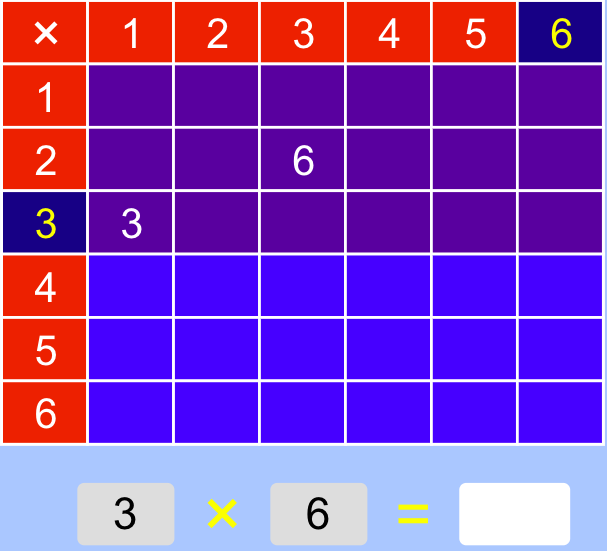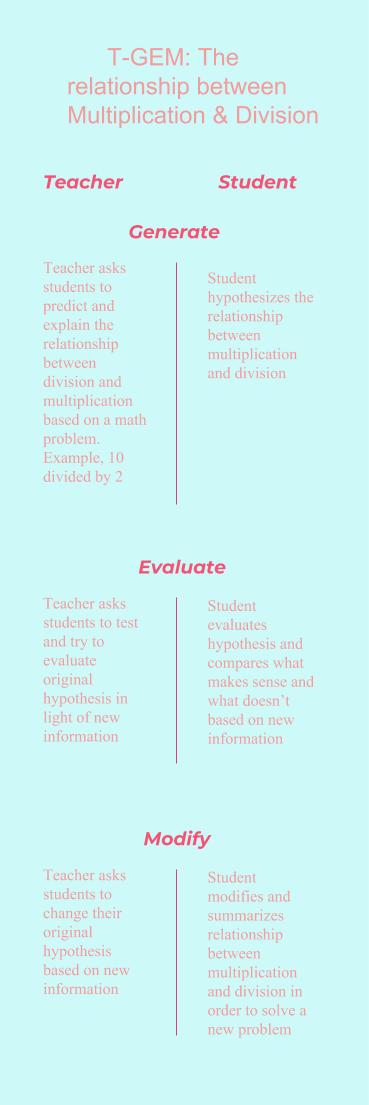As an LST (Learning Support Team) teacher, our focus for this year has been on literacy and math. Math is a struggle for all of my students that I work with. In my current math group, I have six students that range from grades 3-7. These students have very little number sense and recently we have been working on single and double- digit multiplication in which they are having a very difficult time. By following the Gem approach, I am hoping students will be able to have a better understanding of the relationship between multiplication and division. In order to do this, I need to make sure that my students know all of their multiplication facts. I think that one digital simulation that could work well is the interactive website called PhET which stands for Physics Education Technology. When this simulation was first launched, it was aimed at physics but now it has expanded to include math and science (biology, chemistry, physics) and at different levels and grades. There is an interactive computer-based simulation titled ‘Arithmetic’ in which students can play a game with multiplication, division, and factoring. I think this would really help to enforce the concept and I think my learners would also have fun with this.
In her article, ‘New pedagogies on teaching science with computer simulations,’ Khan (2011) states that “some computer simulations are particularly valuable […] because they help students to visualize” would allow students to be engaged, explore, and discover new math concepts and information that learners would find very beneficial in their learning.

This is an interactive multiplication simulation that students can play using Phet
References:
Khan, S. (2010). New pedagogies for teaching with computer simulations. Journal of Science Education and Technology, 20(3), 215-232.
https://phet.colorado.edu/

Hi Sabrina
I like the fact that you discussed using the GEM approach with your current students. As well as introducing the class to PhET. I use some of the PhET simulations in my online high school classes.
I wonder why some students have “very little number sense”. I was in a store a few years ago and the items were rung up and the total that I owed was showing. The teller was going to input the amount I gave him and then the power went out. The teller did not know how to calculate the amount of change he needed to give me. When opportunity knocks — I gave a small math lesson.
A good next step might be share how things went with your students.
Christopher
Hi Christopher,
I am struggling right now with the fact that over half of my class is not able to quickly recall their addition, subtraction, multiplication and division facts. How do we have so many students that do not have an understanding of their basic facts? How to we continue developing their math skills without these basic skills (or can we)? I’m curious about your thoughts as this is a topic that is being debated amongst the staff at my school.
Nicole
Hey Christopher:)
I have used Phet in many of my lessons and it is such a wonderful tool! My students love it because it is interactive and the lessons are actually fun and engaging.
I am not sure why these students have very little number sense, I think a big part has to do with students taking extended vacations when they are younger and then when they miss a big chunk of the basics for math it really puts them at a disadvantage for later. It’s sad really because some parents think that because their children are in grades 2 or 3, they are not missing anything (I have had parents say this to me).
Do you think students should learn their multiplication facts before being introduced to simulations such as Phet?
Hi Sabrina,
I chose to explore division and also referred to the Phet website. I find that many of my students struggle with division because they don’t have a solid understanding of multiplication facts or basic division facts and how the two are related. Do you find that the students that you work with struggle with the recall of multiplication facts to 12? Do you think they have to understand this before the are able to successfully solve basic and long division problems? I am at a loss as to what to do with the students who continually struggle with their facts. Should calculators be used? – this question is a hot topic at my school at the moment.
Nicole
Hi Nicole,
Yes!! I am having a hard time as well. It’s not just the hard facts as well (8, 7, 6); my students are struggling with the easy math facts- like the 5s and 10s. It hurts my head to think about. I think that students should need to have a solid understanding of the facts before they move on because otherwise when it comes to division, they will be completely lost. I use a lot of math games in with my students and I make sure to use hands-on activities as well but many days I feel like I am just hitting my head against a brick wall. I am not sure why these students do not know their basic math facts but its concerning. I don’t know if it is a learning disability issue or something with delayed processing. Or it could be that students do not want to put the time into learning their facts because they would rather play video games or 5 hours.
This is a great article that I found that discusses math and the best ways to learn math. It might be helpful:)
https://bhi61nm2cr3mkdgk1dtaov18-wpengine.netdna-ssl.com/wp-content/uploads/2017/03/FluencyWithoutFear-2015-1.pdf
Thank goodness I’m not the only one! I am teaching grade 7 and many of my students are not able to quickly recall their facts. I don’t understand why this is so difficult for so many students. I also don’t believe it’s because of a learning difference.
Nicole
Hi Sabrina,
Thanks for introducing a great online tool to help children understand multiplication and division. As I have had some experience teaching LST before, I think this is a great resource to be used in an LST classroom. I am wondering, given your experience in LST classroom for younger grades, whether you think there are some misconceptions that lead students to have issues with multiplication and division or it is just a matter of lack of understanding of the topic?
GK
Hi Gursimran,
I really don’t have an answer to why students have misconceptions with some facts concepts/facts but I think that there are a few things that factor into this:
– Parents are not spending enough time reinforcing math practice at home (the teacher can only do so much at school)
– Learning disabilities may play a part in this problem
– Teachers are not integrating new and innovative ways to teach multiplication facts; the work is the same for all students even though there should be differentiation for students who require it.
– Teachers feel the pressure of moving on in the curriculum due to time constraints
There are so many factors but whatever the answer(s), the frustration for both teachers and students is difficult.